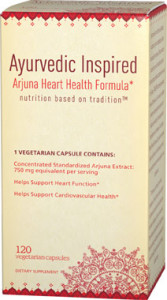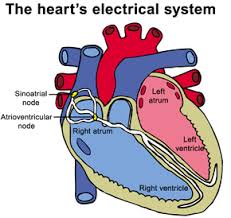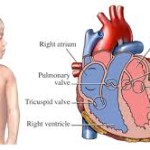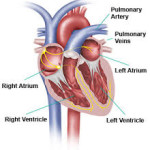Learning how the heart works will help you to stay out of those statistics.
The heart is a pump with an electrical system that helps it to fire between 60 and 80 times each minute, of every hour of every day. This amounts to between 86,000 and 115,200 beats each 24 hours. The heart is about the shape and size of your fist. It is located between both lungs and behind the breastbone (that bone in the center of your chest). The breastbone protects the heart muscle from injury and helps to maintain the structure of the chest cavity for the heart and lungs.
Blood enters the heart from two large vessels called the superior vena cava and the inferior vena cava. The superior vena cava drains blood from the head and shoulders while the inferior vena cava brings blood from the trunk and lower extremities. All of this blood flows into the right upper chamber or the right atrium.
When the right atrium contracts the blood flows through a valve and into the right ventricle. With the next contraction the blood flows out through the pulmonary vein where it flows through the lungs picking up oxygen and returns to the heart through the pulmonary artery in to the left atrium (left upper chamber of the heart). The next pump brings the blood into the left ventricle where it exits through the Aorta.
Resources:
MayoClinic: Heart Disease
http://www.mayoclinic.com/health/circulatory-system/MM00636
National Heart Lung and Blood Institute: How the Heart Works
http://www.nhlbi.nih.gov/health/health-topics/topics/heartmurmur/heartworks.html
LifeBeat: How Your Heart Works
http://www.bostonscientific.com/lifebeat-online/heart-smart/how-your-heart-works.html
KidsHealth: Your Heart and Circulatory System
http://kidshealth.org/kid/htbw/heart.html
Yale-New Haven Hospital: How the Heart Works
http://www.ynhh.org/heart-and-vascular-center/heart_works.aspx
| Advertisement | |
 |
|



Leave a Reply